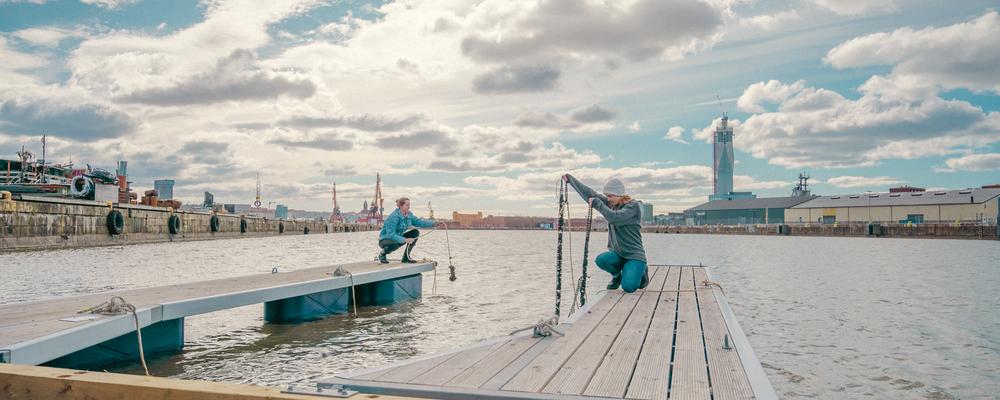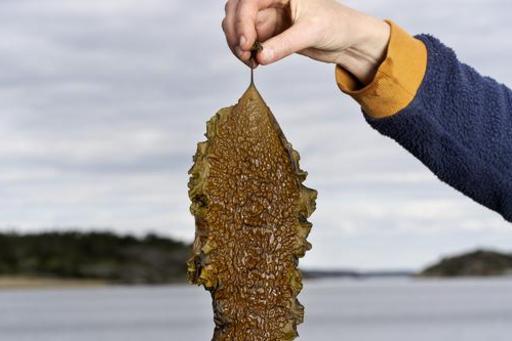
Questions and answers on blue community gardens
Here you can find answers to questions about our work on blue community gardens and small-scale farming in the sea.
What is a blue community garden?
It is a farm in the sea where you grow and store raw materials from the sea, on a small scale and for domestic use. It can be compared to having a greenhouse, a spice garden or a potato patch on land. But unlike cultivation on land, there is no need to add nutrients or water to the crops; the sea has enough nutrients in the form of nitrogen and phosphorus. The blue community garden can be set up either at sea or near the coast by a jetty.

Which species are suitable for growing and storing?
Blue mussels, oysters, and algae such as sugar kelp and grass kelp are examples of species that are grown and stored in blue community gardens. Which species work is mainly determined by salinity. It is important to only grow species that are present in the sea at the location you are in. The introduction of new species can deplete natural populations.
Location of a blue community garden - what physical conditions are required?
Water flow
It is important to place the garden where there is good water flow. By setting up test panels to see what organisms are present in the sea, you can get an indication of how current the water is by seeing which species settle. The blue mussel is a species that needs flowing water.
Depth
It is 2.5-3.5 meters deep at the jetty where the garden in Frihamnen was built. To be able to hang out ropes with algae shoots, cages and baskets, they need to be able to hang freely in the water. If you want to hang out at more depth levels, more depth is required.
Water quality
It is important to choose a location with good water quality, i.e. not in the middle of a harbor with a lot of boat traffic or near sewage pipes.
Salinity
Salinity in the sea can be compared to vegetation zones on land. Along the Swedish coast there is a very large variation in salinity, from a few per thousand in the Gulf of Bothnia to 35 per thousand in the Koster Sea. Salinity determines which species can be grown in each location.
What permits are required?
There are three main types of permits required to build an allotment:
- exceptions to shoreline protection
- application for a cultivation permit (for molluscs, crustaceans and fish)
- application for water activities (for the cultivation of algae).
When processing permits, no distinction is made as to the size of the farm. It is the same permit process whether it is a small-scale farm at a jetty or a full-scale farm.